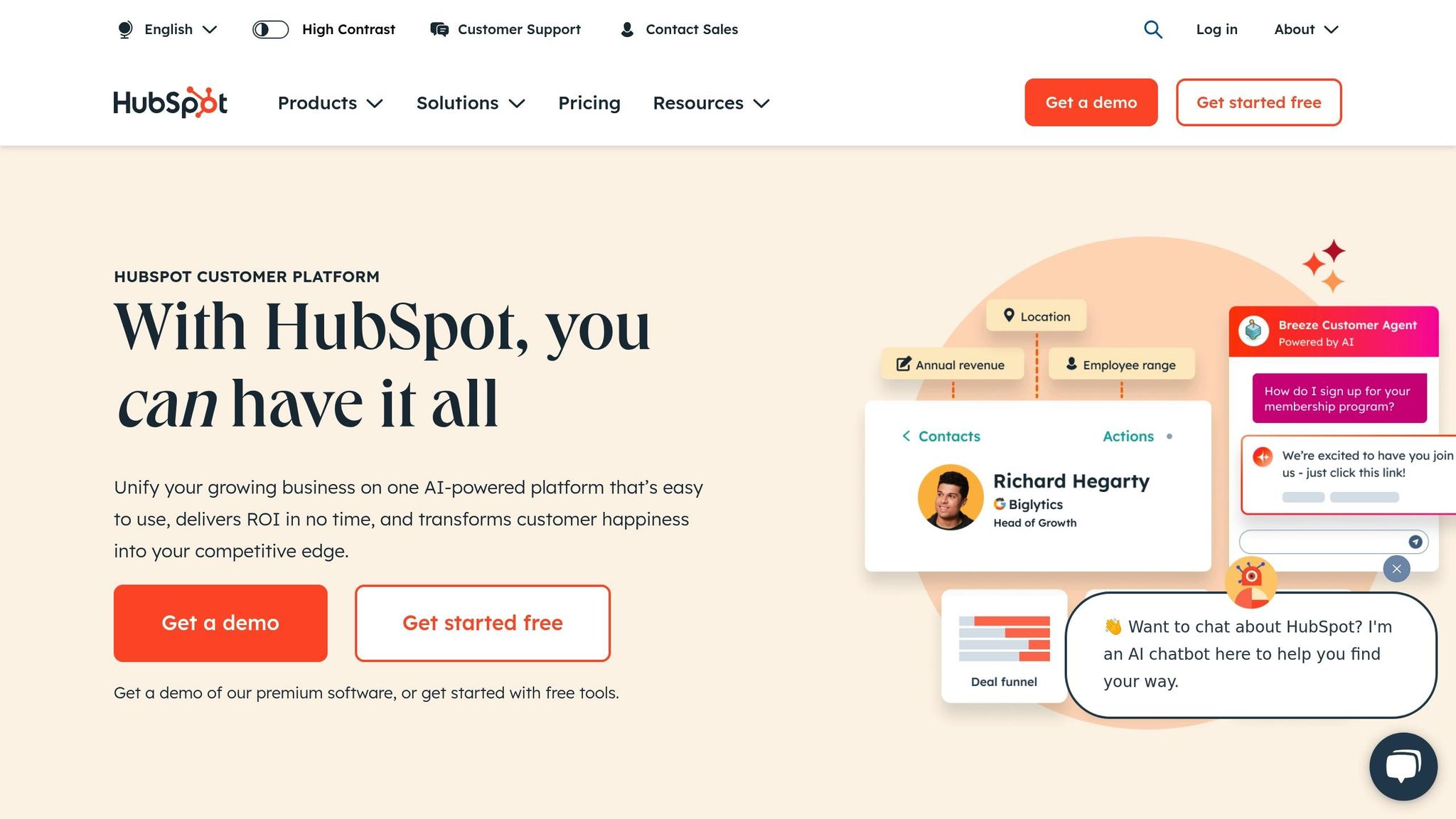Technical Onboarding Insights from SaaS Leaders
Explore effective onboarding strategies from SaaS leaders to reduce churn, boost retention, and enhance customer value through tailored experiences.

Did you know? 75% of users abandon SaaS products within a week if onboarding is challenging. And 89% of customers with poor onboarding experiences switch to competitors.
Here’s how SaaS leaders tackle this issue:
- Set Clear Goals: Track metrics like engagement, time-to-value, and activation rates to measure onboarding success.
- Personalize Onboarding: Tailor experiences to specific roles or use cases, ensuring users feel supported.
- Leverage Feedback: Collect feedback through surveys, session replays, and user interviews to refine the process.
- Automate and Scale: Use self-service tools like walkthroughs, chatbots, and integrations to streamline onboarding while maintaining a personal touch.
- Align Teams: Foster collaboration across sales, engineering, and customer success to ensure smooth transitions and shared goals.
Companies like Google and HubSpot have seen measurable success by focusing on these principles. Google improved new hire productivity by 25%, while HubSpot scaled onboarding with tailored resources.
Bottom line: Effective onboarding reduces churn, boosts retention, and increases customer lifetime value. Start by simplifying the process, tracking key metrics, and personalizing the experience.
8 SaaS user onboarding strategies to boost retention
Core Principles for Technical Team Onboarding
Effective technical onboarding requires a well-thought-out approach tailored to the unique needs of technical teams. SaaS leaders recognize that onboarding is more than just a first step - it's the foundation for the entire customer relationship [4]. By focusing on key principles like clear measurement, role-based customization, and feedback systems, companies can create an onboarding process that drives long-term success.
Setting Clear Goals and Metrics
The success of onboarding often hinges on how effectively progress is measured. Tracking the right metrics can highlight early wins, spot potential challenges, and ensure the entire process remains efficient [4]. However, many companies fall into the trap of focusing on internal processes instead of monitoring the customer’s progress.
To gain actionable insights, measure factors like customer engagement, time spent using the platform, feature exploration, and time-to-value. For example, tracking how long customers spend in-app or how they interact with features aligned to their goals can help assess the onboarding experience. Using customer cohorts to establish baselines and comparing these metrics to similar journeys can provide a clear picture of success [4].
Real-world examples show the impact of data-driven onboarding. Take - a SaaS platform - saw a 124% boost in activation rates by analyzing user data during onboarding [3]. Similarly, Yotpo, an ecommerce marketing platform, improved retention rates by 50% by refining its welcome page based on completion metrics [3].
Once metrics are in place, the next step is to personalize the experience based on user roles.
Customizing Onboarding by Role
Not all users have the same needs. Roles like data scientists and DevOps engineers require tailored onboarding experiences to avoid confusion or frustration. Segmenting users by their roles, goals, and use cases enables companies to design onboarding pathways that align with their specific needs [2][6].
Personalization plays a critical role here. Research shows that 66% of customers are likely to leave if their experience isn’t tailored to them [1]. Despite this, 72% of business leaders pursue personalization strategies that don’t align with customer expectations [1]. This gap represents a chance for companies to stand out by getting it right.
Some companies already demonstrate the power of role-based onboarding. For instance, Cledara used behavior-based segmentation to send personalized in-app messages, significantly increasing engagement within just a week [2]. Similarly, Sked Social found that users who completed their four-step onboarding checklist were three times more likely to become paying customers [2].
To make onboarding more effective, use role segmentation to guide in-app messages and create user personas for tailored experiences. Providing tools like templates, pre-configured settings, or integrations can help users hit the ground running without feeling overwhelmed [6].
A strong feedback system is the final piece of the puzzle.
Building Feedback Systems for Improvement
Feedback is the backbone of a successful onboarding process. Companies that prioritize continuous feedback during onboarding report a 30% increase in employee retention within the first year [10]. Moreover, businesses that invest in feedback are 4.6 times more likely to see higher retention rates [11]. Yet, onboarding can still be a challenging time - 70% of employees feel overwhelmed, and 30% of new hires consider leaving within the first 90 days if the experience is poor [10].
To address this, gather feedback at multiple points throughout the onboarding process. Surveys on day one, week one, month one, and quarter one can provide valuable insights. Keep these surveys concise - no more than ten questions - and use quick pulse polls to capture feedback on key milestones while the experience is still fresh [9].
Ensuring anonymity and confidentiality can encourage honest responses. Regularly analyze the feedback to identify patterns and make necessary adjustments. This not only improves the onboarding process but also builds trust, showing users that their input drives meaningful change [8].
Building Onboarding Systems That Scale
Scaling onboarding systems effectively means finding ways to grow without losing the personal touch. It’s all about combining smart automation, seamless integrations, and teamwork. As companies expand, manual processes can turn into roadblocks, slowing down efficiency and frustrating users. The best SaaS companies build systems that handle increasing demand while keeping the experience personal and high-quality. By operationalizing the core principles of onboarding, businesses can ensure their processes grow sustainably without compromising on user satisfaction.
Using Self-Service Onboarding Tools
Self-service tools are a game-changer for scalable onboarding. They include features like knowledge bases, interactive walkthroughs, and AI chatbots, which not only lighten the manual workload but also deliver consistent experiences across the board.
For instance, Automox used Skilljar for on-demand training, cutting manual onboarding time by 75% and tripling training enrollments [12]. Similarly, Attention Insight saw a 10% boost in activation rates and a 24% increase in time spent on their app after implementing interactive walkthroughs with Userpilot [14]. Another example is The Room, which introduced a "driven action" UI pattern to guide users toward uploading their CVs. This led to a 75% jump in CV uploads - from 200–210 to 300–350 per week - in just 10 days [14].
Native tooltips can also enhance self-guided learning. Talana implemented tooltips with Userpilot, achieving 31% user engagement, which helped boost product adoption [14].
The key to success lies in choosing tools that integrate easily with your existing systems and offer analytics to track user progress. Seamlessly embedding these tools into daily workflows makes onboarding smoother and more effective.
Connecting Onboarding to Existing Tools
Integrating onboarding with tools already in use - like project management, communication, or development platforms - helps new users or employees hit the ground running. This reduces friction and makes the transition smoother.
Take Zenefits, for example. By partnering with Skilljar, they revamped their customer onboarding and training processes, leading to 13% of new users engaging with training and a 5% drop in support tickets [12]. For internal onboarding, automation can simplify even the most complex workflows. The Long Term Stock Exchange (LTSE) used Lattice to automate their 75+ step onboarding process, creating a better experience for new hires and freeing up valuable time for their HR team [15].
"Effective onboarding is a journey, rather than an administrative process. The outcome that really matters is that people joining are engaged and performing at their best as quickly as possible so that they can contribute to the company's mission." - Ciara Lakhani, founder and chief people officer of Elevate People [15]
Preboarding workflows can address first-day challenges before they arise. Automating tasks like ordering hardware, providing early access to tools, and gathering preferences through surveys can make a big difference. Compliance workflows can handle document signing automatically, while HR systems can manage buddy assignments and send check-in reminders [15].
A great example of integration is Egnyte University, which offers customized, on-demand training. This approach doubled their Time-To-Value (TTV) and improved customer retention [12].
But technology alone isn’t enough - successful onboarding also requires teamwork across departments.
Aligning Teams Across Departments
For onboarding systems to scale effectively, teams across departments need to work in sync. Without proper coordination, even the best tools can fall short due to misaligned priorities or communication breakdowns.
"There need to be shared goals across an organization so that we're all moving in the same direction. And that starts with the leaders of the functions themselves." - Jeff Heckler, Director of Customer Success at MarketSource [16]
It starts with uniting teams around shared objectives. Cross-functional teams - bringing together members from engineering, HR, and customer success - can tackle specific onboarding challenges. Regular check-ins between departments, like sales and customer success, can help identify areas for improvement and share insights [18].
CloudInteract offers a great example of this. In February 2025, their customer service team worked with IT to implement a new CRM system, which improved customer experience and reduced support response times. Meanwhile, their HR and IT teams collaborated to streamline employee onboarding, speeding up the integration of new hires [17].
Technology plays a vital role in fostering collaboration. Digital platforms that enable teams to share updates and communicate effortlessly are essential. Tools like RACI maps can clarify roles and responsibilities, avoiding confusion [18].
"Instead of thinking in a silo, really look at how customer success and sales can better partner together or how you can leverage marketing as a tool and as a resource to drive customer engagement." - Maranda Dziekonski, Chief Customer Officer at Swiftly [16]
Encouraging departments to share insights through structured programs can also drive collaboration. For example, CloudInteract hosted a "Hack Your Workflow" event, where teams from HR, finance, and operations worked together to identify inefficiencies and create solutions [17]. Recognizing and rewarding cross-departmental efforts can sustain this momentum. CloudInteract celebrated their sales and customer success teams for improving customer retention rates, tying performance metrics to shared goals [17].
The secret to scalable onboarding lies in creating systems that run smoothly on their own while keeping the human element where it matters most. Companies that strike this balance set themselves up for long-term growth without compromising the user experience.
Measuring and Improving Onboarding Results
Tracking and refining your onboarding process is crucial for long-term success. Without clear metrics and actionable feedback, even the best-designed onboarding strategies can fall short. SaaS companies that consistently analyze performance data and make adjustments create onboarding experiences that lead to better outcomes for both users and the business. Let’s explore some of the key metrics and strategies that help measure and improve onboarding effectiveness.
Tracking Key Performance Numbers
One of the most important metrics to monitor is Time-to-Value (TTV). This measures how long it takes for a customer to experience the benefits of your product. Dhaval Sarvaiya, co-founder of Intelivita, explains:
"The amount of time it takes for a customer to get value from your product. A shorter TTV means that customers are able to start using and benefiting from your product quicker, which can lead to higher satisfaction and retention rates" [19].
Another critical metric is activation rates, which track how many users reach that all-important "aha" moment. For example, a digital communication platform increased their activation rates by 124% after analyzing onboarding data and addressing user pain points [3]. This improvement came from identifying where users were struggling and making targeted changes.
Completion rates for onboarding modules also provide valuable insights. They show which parts of the process are effective and which need attention. Yotpo, an ecommerce marketing platform, used these metrics to optimize their welcome page, leading to a 50% improvement in retention rates [3]. They found that users who completed specific steps were much more likely to stick around.
Finally, retention and churn rates after onboarding reveal the ultimate impact of your process. Poor onboarding can be costly - mobile apps lose an average of 75% of active users within the first three days, and up to 90% within the first month [5]. On the flip side, reducing churn by just 5% can increase profits by 25–95% [21]. As David Watkins, Director of Customer Experience at EthOS, puts it:
"As a SaaS company, you want your customers to renew their licenses. If a customer is consistently using your product and is happy, then it's a good sign they're going to renew" [19].
It’s also important to avoid vanity metrics. Will Yang cautions against relying on numbers like new account sign-ups, which can be inflated by discounts or free trials:
"I don't consider the number of new accounts, because it's not a good indicator of how well your product is doing. A lot of companies will get new accounts by offering discounts or free trials to new customers, and these kinds of accounts don't stay with you for long" [19].
These metrics don’t just measure onboarding success - they directly impact your bottom line. For instance, a 25% increase in activation rates can drive a 34% boost in monthly recurring revenue over a year [24].
Using Feedback to Make Changes
Metrics tell an important story, but they don’t capture everything. To truly improve, you need to understand the human experiences behind the data. Vito Peleg, founder and CEO of Atarim, highlights the value of qualitative feedback:
"Beyond checking conversion rate, we find we're able to gain more by focusing on qualitative data (vs. just on the numbers), including but not limiting to actually taking the time to hop on calls with users who don't reach that point - as well as those that do - to understand what the main deciding factor was" [19].
Here are a few ways to gather meaningful feedback:
- Support ticket analysis: Repeated user complaints about the same onboarding issues can uncover hidden problems. Addressing these pain points through A/B testing can lead to major improvements [20].
- Session replays and user path analysis: Watching how users navigate your onboarding process can reveal moments of hesitation, frustration, or drop-off that surveys might miss.
- Direct user interviews: Speaking with both successful users and those who drop off provides deep insights into their motivations and challenges.
- Behavioral segmentation: Different users engage with onboarding in different ways. By analyzing how various groups behave, you can tailor the experience to meet their needs.
The goal is to combine quantitative data with qualitative insights, creating a full picture of what’s working and what needs improvement.
Making Changes Based on Data
Data is only useful when it leads to action. The most successful SaaS companies have systems in place to turn insights into meaningful changes. For example, Akool reduced churn by 26.4% by refining their onboarding process based on user data [22].
Here are some effective strategies for implementing changes:
- A/B testing: Test potential improvements before rolling them out widely. Sked Social, for instance, discovered that users were abandoning their onboarding process early. By offering either a one-on-one walkthrough or a checklist system, they tripled their conversions [23].
- Cohort analysis: Compare how different groups of users respond to changes over time to ensure your adjustments are truly effective.
- Funnel analytics: Identify the exact steps where users drop off so you can make targeted fixes.
- Trend dashboards: Keep your team focused on the metrics that matter most. This makes it easier to spot issues early and celebrate progress.
Regular review cycles are essential. Teams should consistently analyze data, identify opportunities, and implement improvements. Ameet Mehta, cofounder of SyndicationPro, stresses the importance of clarity in onboarding:
"There's no better way to onboard than having your users know exactly where they fit into the process and what they need to do next. If you can make this process seamless for them and guide them through it without confusion, you'll have a happier ending with a better onboarding process" [19].
It’s worth noting that 63% of customers consider the onboarding flow when deciding to make a purchase, and 85% say they’re more likely to stay loyal to a business that invests in educational onboarding content [7]. These numbers highlight why optimizing your onboarding process is a must, not an option.
The companies that succeed are those that treat onboarding improvement as an ongoing effort. By continuously gathering feedback, analyzing performance, and acting on insights, they create experiences that not only delight users but also drive business growth.
Real Examples from Leading SaaS Companies
Some of the biggest names in the SaaS world have fine-tuned their onboarding processes to deliver measurable results. Let’s dive into a couple of standout examples and see what strategies fast-growing companies can take away from their success.
Case Study: Google's Noogler Program
Google’s onboarding program for new employees, cleverly called the "Noogler" program, is a masterclass in balancing autonomy with timely support. The program’s goal? To make new technical hires productive as quickly as possible. And it works - Google has the numbers to prove it.
A cornerstone of the program is its use of "nudges." These are short, timely reminders that hit new hires and managers right when they need them. Laszlo Bock, a former Google executive, put it simply: “The gentlest of reminders can make a difference” [25]. These nudges help ensure no crucial steps are skipped during onboarding.
For managers, Google provides a checklist covering key tasks like defining roles, assigning peer buddies, encouraging social connections, scheduling regular check-ins, and keeping communication lines open [25][26]. Meanwhile, new hires get reminders to ask questions, schedule one-on-one meetings, seek feedback, and even take calculated risks [25].
The results speak for themselves. Google’s onboarding tweaks boosted new hire productivity by 25%, and new employees became fully effective a whole month faster [25]. On top of that, feedback from Nooglers led to a 2% increase in overall workforce productivity [25].
Another noteworthy aspect? Google immerses new hires in its culture and technical principles through intensive lectures. While it can feel overwhelming, as former Google engineer Kellen Donahue remarked, “It seems like when you really understand a concept, you realize you just saw the tip of the iceberg” [26]. To build confidence, new employees are also entrusted with meaningful projects right from the start [26].
Case Study: HubSpot's Resource-Driven Approach

HubSpot takes a different but equally effective approach, blending self-serve resources with personalized experiences. This method is particularly useful for fast-growing SaaS companies that need to scale onboarding without sacrificing the personal touch.
HubSpot’s strategy includes a mix of tools like knowledge bases, community forums, automated email sequences, tailored checklists, and proactive follow-ups based on user behavior. This gives technical users the flexibility to learn at their own pace while still receiving support when they need it.
One example of this in action is Jet Lending’s integration with HubSpot, which led to better documentation, improved processes, and real-time reporting. These changes sped up funding timelines and gave leadership instant insights [27].
HubSpot’s philosophy aligns with Steve Jobs’ famous words: “You’ve got to start with the customer experience and work back toward the technology - not the other way around” [2]. To deliver on this, HubSpot offers interactive tutorials, in-app guidance, and real-time support through live chat and chatbots [2]. As onboarding expert Donna Weber aptly notes, “Successful customer onboarding starts before the deal closes and extends beyond the customer’s first move within your product” [2].
These examples highlight how different approaches can achieve impressive results. The key takeaway? There’s no one-size-fits-all solution, but focusing on user needs and delivering value early on is critical.
Best Practices for Fast-Growing Companies
Rapid growth comes with its own set of onboarding challenges, but there are proven strategies to overcome them. Successful SaaS companies focus on minimizing friction, personalizing the experience, and helping users see value quickly [29].
Here are some impressive results from companies that nailed their onboarding strategies:
- Guru: Increased user activation by 71% by implementing personalized onboarding flows, in-app messaging, and milestone-based engagement [29].
- The Room: Boosted weekly CV uploads by 75% in just 10 days with a self-serve onboarding flow and a clear "upload CV" prompt [14].
- Attention Insight: Achieved a 10% rise in activation rates and a 24% increase in app usage after introducing interactive walkthroughs [14].
- Sked Social: Found that users who completed a four-step onboarding checklist were three times more likely to become paying customers [14].
For technical founders, solutions like High-Growth Digital’s Technical Value Architecture can transform complex products into simpler, step-by-step onboarding processes.
The importance of a strong onboarding experience can’t be overstated. Research shows that 86% of customers are more likely to stick around if their onboarding experience is enjoyable and includes continuous learning opportunities [28]. On the flip side, 66% of users say they’ll leave if the experience isn’t personalized [1], and SaaS companies risk losing up to 75% of new users within the first week without effective onboarding [7].
The lesson here is clear: creating engaging, tailored onboarding content and focusing on key metrics can make all the difference in keeping users around and ensuring long-term success.
Key Takeaways for SaaS Leaders
Here’s what SaaS leaders need to know to stay ahead in the game.
Effective onboarding isn’t just a nice-to-have - it’s a must-have. With 63% of customers factoring onboarding into their buying decisions [13] and U.S. companies losing $168 billion annually due to customer churn [2], a strong onboarding process can be the difference between growth and failure.
Focus on strategies that deliver results. For example, Automox slashed manual onboarding time by 75% through structured training, while Egnyte doubled its time-to-value and improved retention by creating personalized learning paths [12]. These achievements didn’t happen by chance - they’re the result of carefully crafted strategies that put user needs first.
Onboarding is about creating power users. As Len Markiden explains:
"Customers abandon your product because they get lost, don't understand something, don't get value from the product, or simply lose interest." [30]
The goal is to guide users from confusion to mastery, ensuring they see the value in your product as quickly as possible.
Personalization and segmentation are game-changers. The Room saw a 75% increase in CV uploads with a targeted onboarding flow, while Sked Social discovered that users who completed their four-step checklist were three times more likely to convert [14]. Tailoring the onboarding experience to match different user goals can dramatically boost engagement.
Automation can scale your efforts - but with care. Automated interactions cost as little as $0.25 compared to $6–$12 for human support [31], making automation an economical solution. However, it should complement, not replace, the human touch. For instance, Zenefits reduced support tickets by 5% by introducing structured training to address common issues proactively [12].
Track and learn from your data. Metrics like activation rates, time-to-value, and engagement are essential. But don’t stop there. Vito Peleg from Atarim highlights the importance of qualitative feedback:
"Beyond checking conversion rate, we find we're able to gain more by focusing on qualitative data, including but not limiting to actually taking the time to hop on calls with users who don't reach that point - as well as those that do - to understand what the main deciding factor was." [19]
This kind of insight can guide continuous improvements in your onboarding process.
For technical founders, simplicity is key. Bridging complex products with user-friendly onboarding is crucial. High-Growth Digital’s Technical Value Architecture offers a strong example of how to make this work.
Good onboarding creates loyal customers. A whopping 86% of customers are more likely to stick around if a company invests in quality onboarding content [12]. It’s not just about reducing churn - it’s about turning customers into advocates for your product.
The takeaway is simple: reduce friction, deliver value upfront, personalize the experience, and adapt based on real user feedback. Your onboarding process should grow alongside your product and your users, always aiming to help them achieve their goals quickly and effectively. This alignment between user success and business growth is the foundation of every strategy discussed here.
FAQs
What are the best ways for SaaS companies to measure the success of their onboarding process?
Measuring the Success of SaaS Onboarding
To gauge how well your SaaS onboarding process is performing, keep an eye on a few key metrics. These indicators offer valuable insights into whether your onboarding efforts are hitting the mark:
- Retention Rate: This tells you how many users stick around after going through the onboarding process. A high retention rate often signals that users are finding value in your product early on.
- Time to Value (TTV): This metric tracks how quickly new customers reach their first "aha moment" or achieve a meaningful success with your product. The shorter this time, the better.
- Feature Adoption: By monitoring how users interact with your product’s core features, you can understand how well they’re engaging and whether they’re making the most of what your platform offers.
By regularly reviewing these metrics, you can uncover areas where your onboarding process might need improvement. The goal? Help customers realize the value of your product as quickly as possible. When that happens, satisfaction goes up - and so does the likelihood of long-term growth.
How can SaaS companies personalize onboarding experiences for different user roles?
To make onboarding more personal and effective, start by grouping users based on their roles, like developers, managers, or administrators. This approach lets you deliver content that speaks directly to their specific needs and objectives.
You can gather this information during sign-up with welcome surveys or forms. By understanding user roles upfront, you can create customized onboarding experiences that provide the right guidance and resources for each group. Adding interactive elements like walkthroughs and tooltips can further enhance the experience by pointing out the features most relevant to their role.
Don’t stop there - keep collecting feedback regularly to fine-tune your onboarding process. Personalization isn’t a one-and-done effort; it should adapt as your users’ roles and needs evolve.
How can SaaS companies improve their onboarding process using user feedback?
To make the onboarding process for SaaS products more effective, businesses should focus on setting up continuous feedback loops that directly engage users. This can be achieved through methods like surveys, in-app feedback tools, and one-on-one interviews, which help uncover challenges and areas needing improvement.
By studying user behavior and feedback, companies can make informed changes to their onboarding approach, tailoring it to better meet user expectations. A personalized experience driven by this feedback doesn’t just enhance satisfaction - it also strengthens retention and nurtures lasting customer loyalty.




